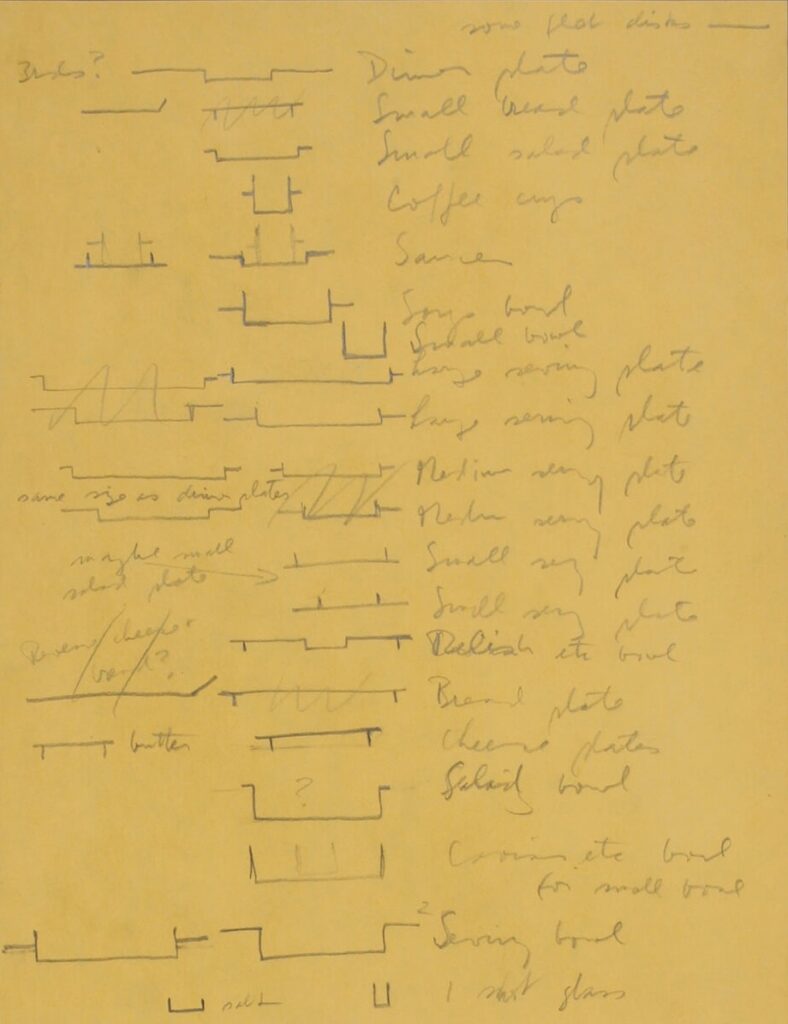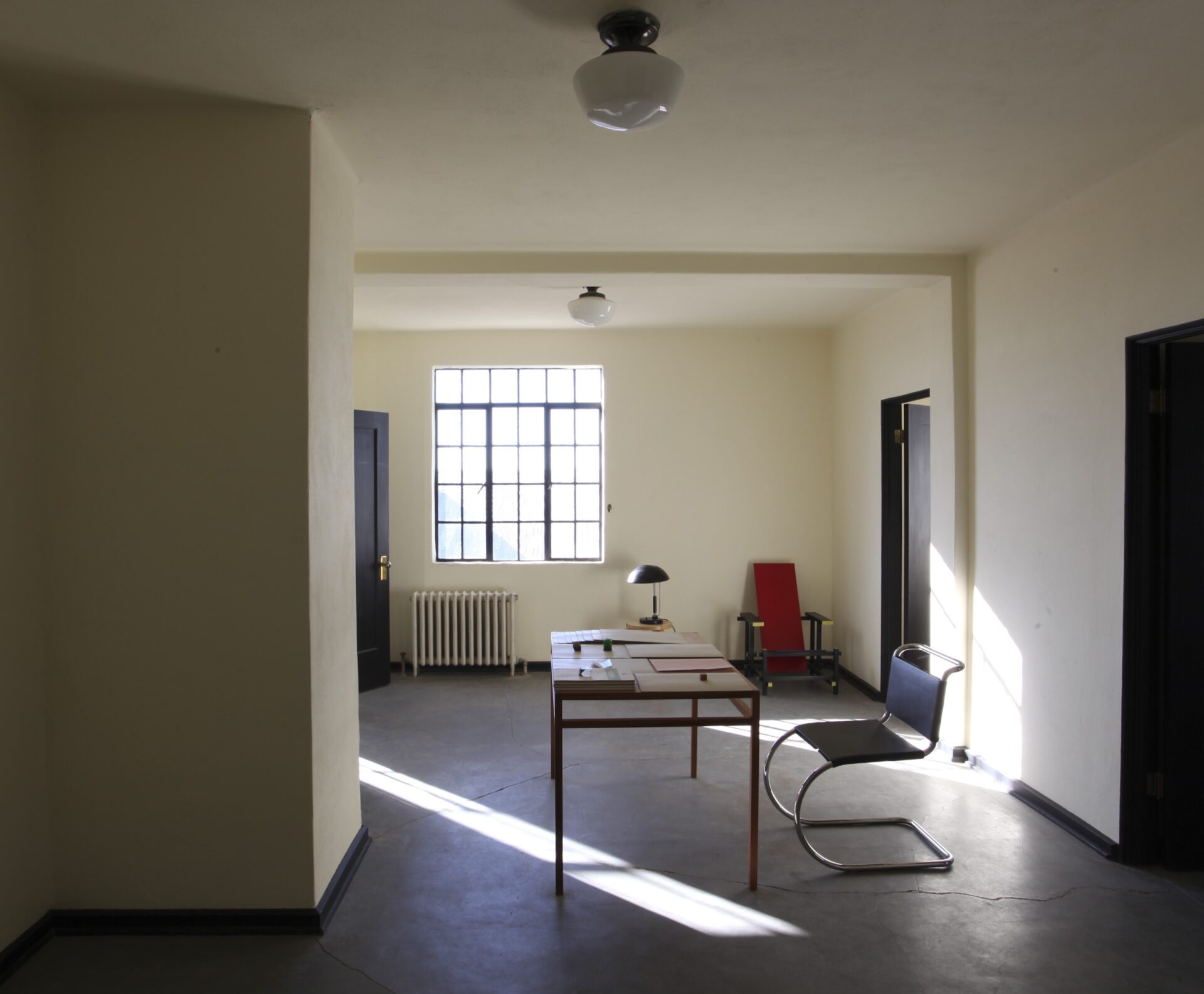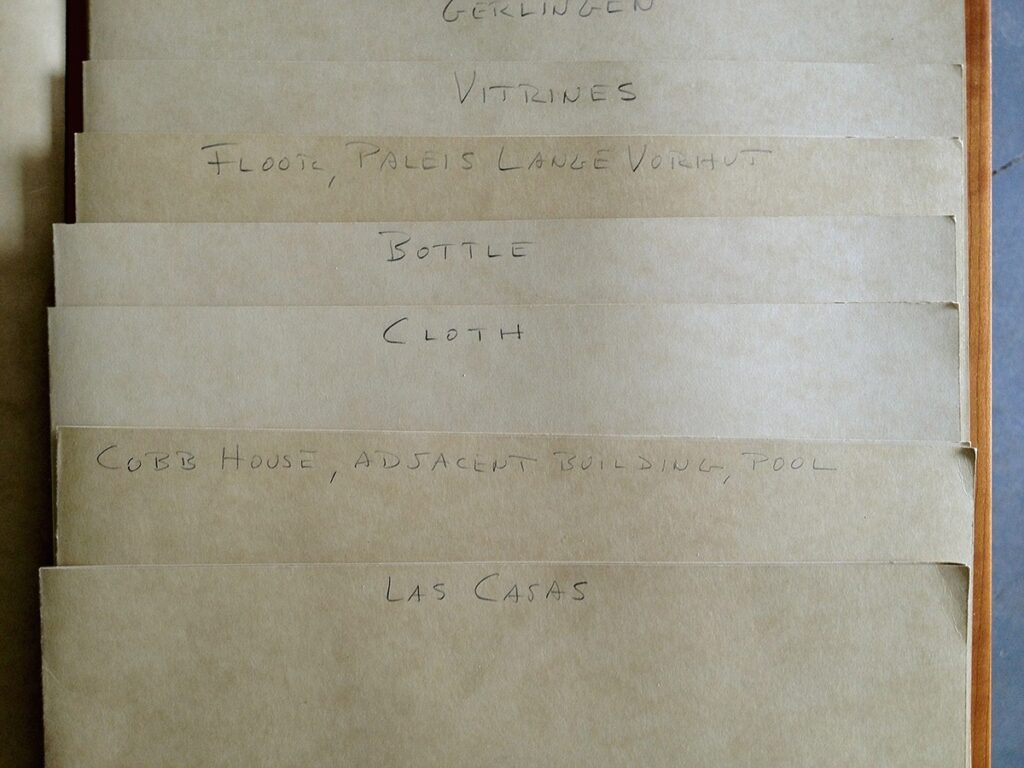

“It’s impossible to go the store and buy a chair,” Donald Judd wrote in his 1993 essay “It’s Hard to Find a Good Lamp.” It was out of necessity that he began to design furniture; first a pair of sinks for 101 Spring Street and then a bed for his children’s room in Marfa, Texas. As Judd renovated the buildings at La Mansana de Chinati/The Block in Marfa, he designed more furniture for the property, including an outdoor pergola and shelving for his extensive library; he also designed indoor and outdoor furniture for his ranch south of Marfa. At the time of his death in 1994, Judd had designed nearly one hundred pieces of furniture, as well as objects such as cups, saucers, and plates. Although never put into production, the prototype for Judd’s plates can be seen in his Architecture Office in downtown Marfa.
Judd, along with 18 other artists including Dan Flavin, Roy Lichtenstein, George Segal, and Cindy Sherman, was commissioned by New York-based company Artes Magnus to design dinnerware sets in porcelain to be produced in Limoges, France. As seen in his drawings circa 1989, Judd was conceiving of a full set of dinnerware, which was to include plates and bowls of a variety of sizes, as well as coffee cups and saucers.

The prototype plates, in grey, white, and black enamel, had inset bases with large outer rings. Dissatisfied with the slope on the inside and edges of the plates, Judd rejected the prototypes, later working with Bernstein Brothers, the long-time fabricator of his work in three-dimensions, to make metal forms, hoping that this would create firmer plate edges.
In addition to the plates, Judd’s Architecture Office includes installed drawings, blueprints, and models for his numerous design and architecture projects, including glass bottles that Judd was working on with master printmaker Robert Arber in 1989. As Roberta Smith, art critic and former assistant to Judd, commented in a 2003 lecture, “Judd wanted to create a world that was entirely self-sufficient, and he achieved this in Marfa.” The diversity of Judd’s design work can be seen by looking at the folders of drawings he had in his Architecture Studio, across from the Architecture Office on the main street in Marfa.

For example, in just one set of folders, seen on a table on the second floor of the Architecture Studio, Judd had drawings pertaining to vitrines, textiles, pools, and ranch houses.

For research and preservation, these drawings have been removed from their original folders and are now part of the Judd Foundation Archives. Each drawing has been photographed, measured and re-housed. Judd’s original folders have been left in place, as they were when the Architecture Studio was in use.